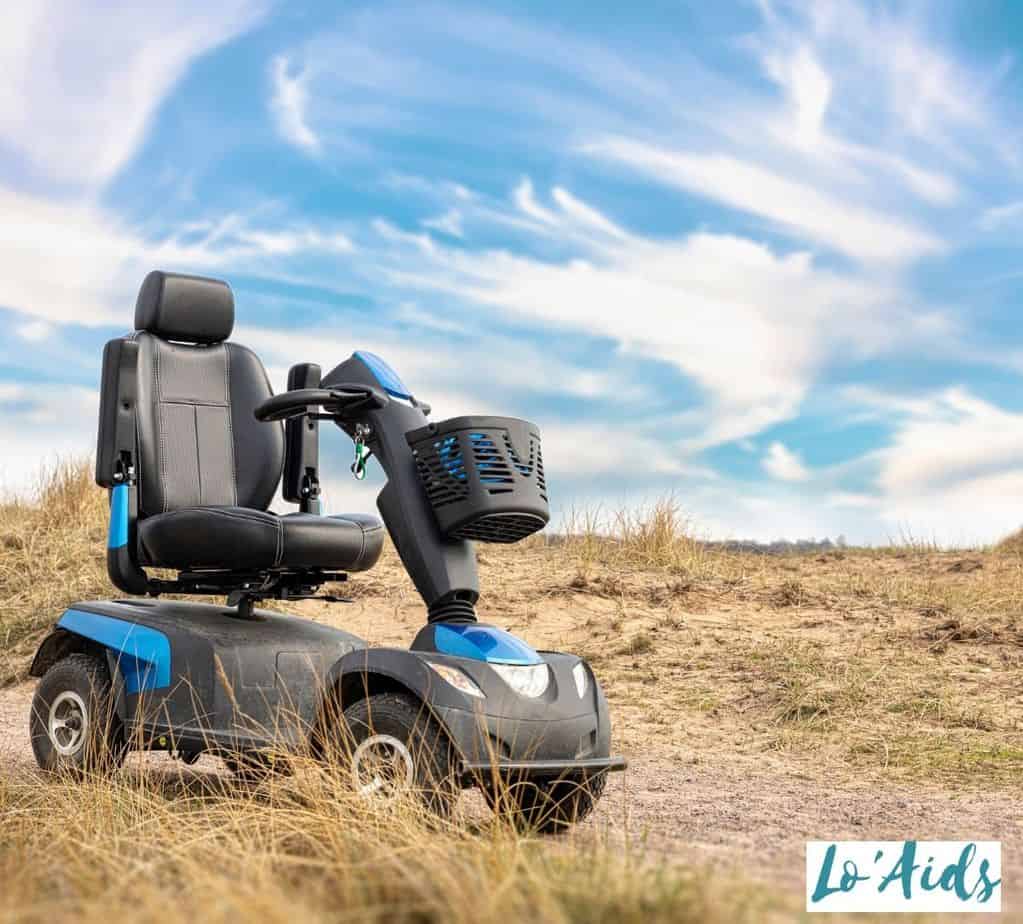So you want to know how far your electric wheelchair can go.
This is an important question to ask before buying a wheelchair because you’ll need electric wheelchairs that can go the longest distance over extended periods of time.
I’ll share some factors that I learned from my experience with my wheelchair that can influence this. Read more and learn!
READ MORE: How Do I Reset My Jazzy Power Chair?
Table of Contents
5 Factors that Determine How Far an Electric Wheelchair Goes
The distance electric scooters can go is determined by several factors. It is important you know these factors to enhance its durability and battery life. Find them below.
1. Speed
Your electric wheelchairs will go far if you maintain constant speed at all times. Going at a low speed also helps preserve your motorized wheelchair time frame.
If you move at an extremely high electric wheelchair speed, your battery life gets depleted fast. With less battery power, it means you have less running distance and time.
You can avoid moving at the maximum speed through effective time management. Make sure you are always on time to avoid the temptations of increasing your powered wheelchair speed up to the maximum speed.
2. Your Tire Pressure
Always ensure your motorized wheelchair has the right tire pressure. Don’t move with underinflated tires since they can make your wheelchair break down.

With low pressure, you cannot move far with your powered wheelchair. It also becomes more challenging to move your manual wheelchairs with deflated tires.
Before moving out, check the tire pressure to ensure it is adequate. If it doesn’t have enough pressure, you need to feel it as required.
You can expect your wheelchair to move far with the right tire pressure. Your machine will also last for many years and save you repair costs.
3. Weight Capacity
When you buy a wheelchair, you need to check its weight limit. This ensures that you will never go beyond the weight limits stated in the user manual.
Electric wheelchairs come with a wide range of weight capacities. So, you need to consider your weight and other items you carry with your mobility device to make an informed selection.
To be on the safer side, you need a wheelchair with an extra weight capacity. This helps ensure that your power wheelchairs handle your future weight-increased needs.
As you move with the powered wheelchair, always have a load under the weight limits shown. This ensures that your machine is under no pressure and allows it to move effectively.
Another vital aspect you should note is that your power wheelchairs move slower with excess weight. The risks of damage are also high.
4. Terrain
How far your electric wheelchair [1] will go is also determined by the terrain you move on. It won’t go far with rougher terrain because of the many impacts involved in the moving process.

The uneven terrain affects the distance you can cover. It also makes you apply more effort to maneuver, especially with manual wheelchairs.
Since the rough terrain also impacts the durability of your wheelchair, you need to avoid such surfaces as much as you can. This will save you repair costs.
If you know you will move on rough terrain, pick a heavy-duty and strong wheelchair. There are models designed for rougher terrain for you to choose from.
5. Battery Health
If you don’t charge your electric wheelchair batteries well, you won’t go far. It is advisable to charge for at least eight to 12 hours to enhance the battery power.
If you don’t use your wheelchair often, you can charge the gel battery less frequently. The most important thing is to ensure you charge according to your battery type.
RELATED: How to Change Battery on Jazzy Wheelchair?
What Should Be the Typical Range of an Electric Wheelchair?
The typical range of your electric wheelchair varies depending on how you move and use it. If you carry light items, the wheelchair will move far.
With less weight, the battery power consumption is low.
The terrain also determines the range. If you move on even grounds, your wheelchair will go farther than when you move on rough or hilly terrains.
The speed you move your wheelchair is a significant determinant of how far it goes. With maximum speed, you use more battery capacity, making it to be depleted fast.
Use a moderate setting of 3/5 to increase battery life.
READ MORE: How an Electric Wheelchair Works?
Typical Range: Tips to Extend the Range of Your Electric Wheelchair
1. Perform General Maintenance
Your electric wheelchairs bolts, nuts and other connections get loose with time. Make sure you keep them secure and tight. The loose parts cause your powered wheelchair to break down.
You should perform weekly checkups to recognize minor issues that need immediate attention. Allowing minor issues to escalate leads to high repair costs.
2. Keep the Electric Wheelchair Clean
Your powered wheelchair accumulates dirt, dust and debris in its different parts. Cleaning your wheelchair improves its performance and range.
The best way to clean the different parts is by wiping them using a damp sponge or cloth. Wash the cushion covers by hand or with a machine to prevent the accumulation of debris.
Here is a video on how to clean your wheelchair.
3. Check Out the Tire Condition
Moving your power chairs in rough terrain causes gradual tire tear and wear. Perform weekly checkups and, if there are issues, have your tires replaced.
Problems with your wheelchair tires cause safety and performance issues. They make the battery for power chair drain quickly. Weekly cleaning helps keep the wheels/casters working perfectly.
4. Keep Your Electric Wheelchair Battery Charged
Make sure you charge your power wheelchair batteries regularly. Even when you don’t use the electric wheelchair often, charge the battery.
Allowing the battery to drain causes damage. You should also use the right wheelchair battery charger.
I usually charge my power wheelchair batteries overnight to make it full for the following day. If the battery cannot retain charge or charge fully, replace it.
Follow this video to replace dead batteries.
FAQs
How can I extend my powered wheelchair?
Typical power wheelchairs [2] can go for two or three years with proper care. Apply consistent speed, use the right battery charger and ensure your battery has maximum power at all times.
How often should I charge my power wheelchairs?
It depends on how frequently you use it. As an active wheelchair user, charge for about eight hours after use. If you use it occasionally, charge a minimum of eight hours a week.
Is it right to upgrade the battery to improve the range?
Yes, you can upgrade your power chair batteries to improve the range. Check the batteries your wheelchair has and the options available.
You should contact your electric wheelchairs professional service for more advice on how to upgrade. If you have a factory warranty, ensure that your upgrade won’t disqualify you from it.
Conclusion
How far your electric wheelchairs go depends on the level of maintenance you provide. It is upon you to ensure you take proper care and use the power chair as recommended.
Understanding how the different parts operate helps you detect when your powered wheelchair needs special attention.

Did you figure out how long an electric wheelchair could last? Comment down your findings with us!
References
- 1. Morgado Ramirez DZ, Rasha L, Barbareschi G, Suzuki T, Caplan I, McKinnon I, et al. Adjusted method to calculate an electric wheelchair power cycle: fuel cell implementation example. Journal of Energy Storage [Internet]. 2019 [cited 2022 Feb 24];23:371–80. Available from: https://www.sciencedirect.com/science/article/pii/S2352152X18308016
- 1. Mortenson WB, Hammell KW, Luts A, Soles C, Miller WC. The power of power wheelchairs: Mobility choices of community-dwelling, older adults. Scandinavian Journal of Occupational Therapy [Internet]. 2015;22:394–401. Available from: https://www.ncbi.nlm.nih.gov/pmc/articles/PMC4818588/pdf/nihms5135.pdf





